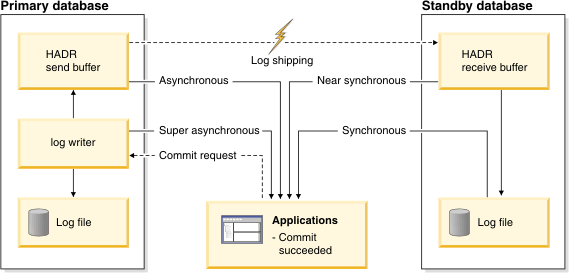This parameter specifies the synchronization mode, which determines how primary log writes are synchronized with the standby when the systems are in peer state.
Valid values for this parameter are:
In this mode, log writes are considered successful only when logs have been written to log files on the primary database and when the primary database has received acknowledgement from the standby database that the logs have also been written to log files on the standby database. The log data is guaranteed to be stored at both sites.
In this mode, log writes are considered successful only when the log records have been written to the log files on the primary database and when the primary database has received acknowledgement from the standby system that the logs have also been written to main memory on the standby system. Loss of data occurs only if both sites fail simultaneously and if the target site has not transferred to nonvolatile storage all of the log data that it has received.
In this mode, log writes are considered successful only when the log records have been written to the log files on the primary database and have been delivered to the TCP layer of the primary system's host machine. Because the primary system does not wait for acknowledgement from the standby system, transactions might be considered committed when they are still on their way to the standby.
In this mode, the HADR pair can never be in peer state or disconnected peer state. The log writes are considered successful only when the log records have been written to the log files on the primary database. Because the primary system does not wait for acknowledgement from the standby system, transactions might be considered committed when they are still on their way to the standby.
Figure 1 shows when the logs for transactions are considered successful based on the synchronization mode chosen:
